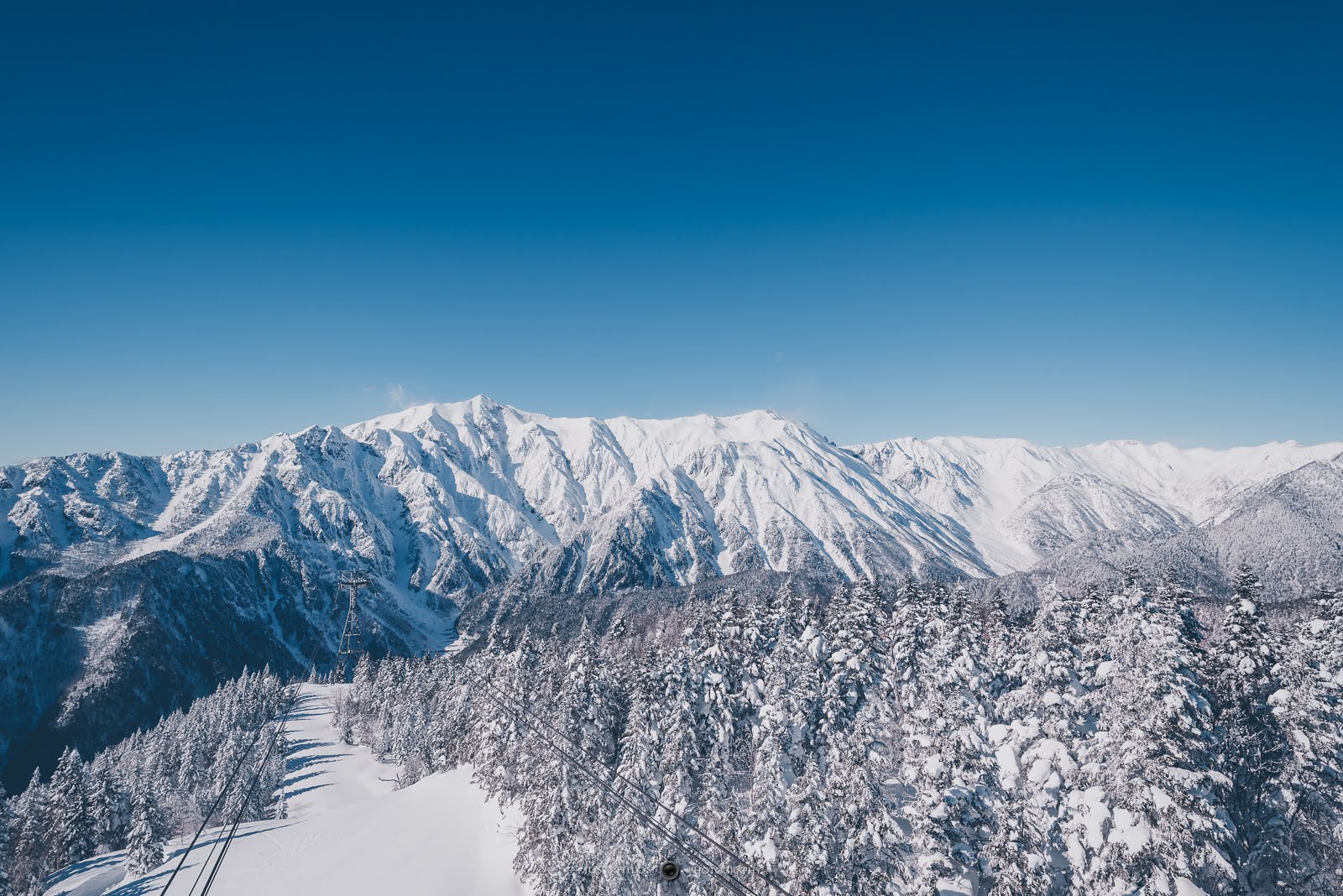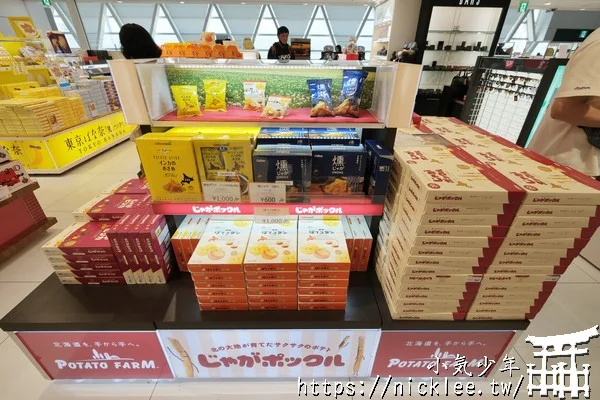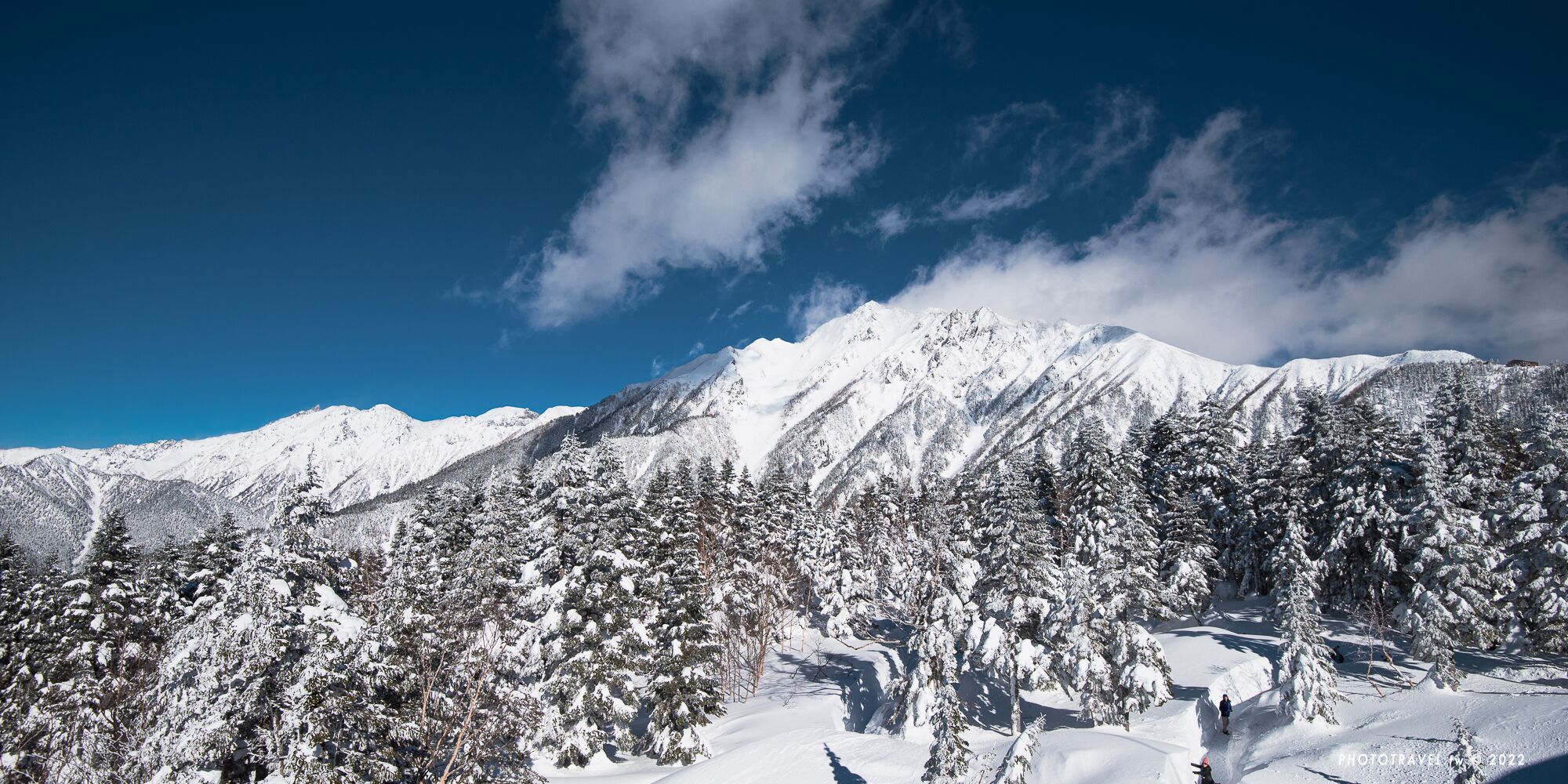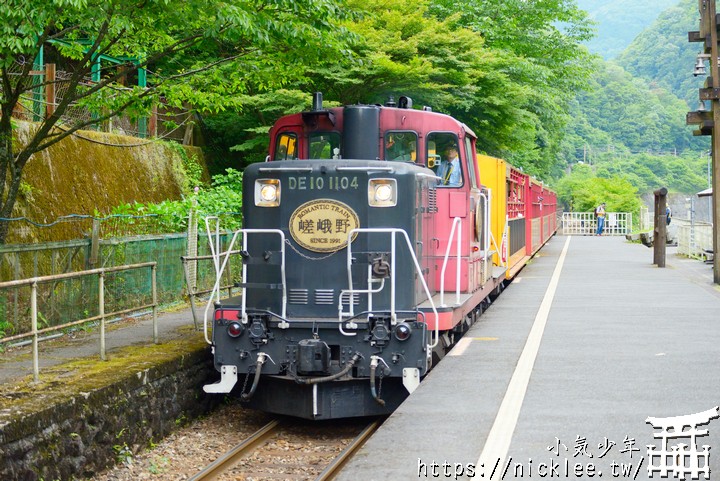Taking advantage of the New Year holiday, I embarked on my first eight-day journey from Kansai to Hokuriku. The itinerary included the night view from Abeno Harukas in Osaka, Kifune Shrine in Kyoto, the snow-covered Kinkaku-ji Temple, Nagoya Castle, the Hida-Takayama area, the Kamikochi cable car, the illuminated Gassho Village, Kanazawa Castle, and the night illumination of Kenrokuen Garden. It was a fulfilling holiday! This was my first time traveling abroad during the New Year, and I had already bought the plane tickets a year in advance. I am grateful to my friends for arranging the itinerary, allowing me to enjoy the trip without much planning, and to the heavens for silently helping us, making our journey almost flawless. Since we visited many places, we planned an A-to-B route, starting from Osaka and traveling through the Hokuriku region, finally returning to Taiwan from Komatsu Airport.
▋Itinerary Overview
Day 1
Taiwan Taoyuan International Airport → EVA Air BR178 → Kansai International Airport, Osaka → Aviation Shrine → Iwashimizu Hachimangu Shrine → Abeno Harukas Observatory → Ichiran Ramen at Dotonbori.
Day 2
Osaka → Kyoto Station Meidai Tonkatsu → Fushimi Inari Taisha → Kurama-dera → Kibune Shrine
Day 3
Kiyomizu-dera → Kamigamo Shrine → Pontocho → Rokudenya for dinner
Day 4
Kinkaku-ji → Shinkansen to Nagoya → Atsuta Shrine → Nagoya Castle → Nohi Bus to Takayama → Night photography at Sanmachi Suji, Takayama
Day 5
Miyagawa Morning Market, Takayama → Shin-Hotaka → Shin-Hotaka Ropeway → Fukuchi Onsen Hidden Inn for a hot spring bath
Day 6
Fukuchi Onsen → Hida Kokubunji Temple, Takayama → Sanmachi Suji → Takayama Jinya → Passing through Toyama → Night illumination at Kenrokuen Garden, Kanazawa → Night photography at Kanazawa Castle
Day 7
Gassho Village Illumination(Three Small Houses, Myozenji, Kanda House, Observation Deck Illumination)
Day 8
Higashi Chaya District, Kanazawa → Omicho Market → Komatsu Airport → EVA Air BR157 → Taiwan Taoyuan International Airport
▋Tickets Used
For this trip, except for the day we rented a car to visit Gassho Village, we mostly used transportation passes.
KTP (Kansai Thru Pass)
For the first three days, we used the Kansai Thru Pass (KTP) three-day ticket, which covered almost all destinations in Osaka and Kyoto, except for JR trains. However, starting next year (2018), some places will no longer accept KTP. For details, please refer to the official websiteannouncement. You can purchase the pass in Taiwan through travel agencies or buy it locally in Japan.
Shoryudo Bus Pass
In the Hokuriku region, we used the Shoryudo Bus Pass, which allows unlimited rides on designated buses in the Hokuriku area, including Nagoya, Takayama, and Kanazawa, for five consecutive days. You must purchase the pass in Taiwan and exchange it at designated locations in Japan (it cannot be bought within Japan). You can buy it on KKday or Klook, print the voucher, and exchange it in Japan.
▋Equipment Used
Since most of the shooting was done in snowy conditions, it is recommended to use a DSLR camera that can withstand temperature changes. Additionally, the observation deck at Gassho Village is more suitable for mid-to-long focal length shots, so a telephoto lens is advisable.
The equipment I brought included:
Nikon D750
Nikon 16-35mm F4G (used for about 90% of the time)
Nikon 24-120mm F4G (used for less than 2% of the time, can be left out if too heavy)
Nikon 70-200mm F4G (used for about 2% of the time, mainly at Gassho Village)
Since there were also many night photography spots, a tripod was essential.
Here are some photos from the trip:
#1 Boarding EVA Air flight BR178, the aircraft was an A321-200 with Star Alliance livery, and it was still dark as it was just past 6 AM.

#2 After the plane passed through the low clouds, we were greeted by a sea of clouds at sunrise.

#3 It was my first time entering Osaka directly from Kansai, and with the KTP, we took the Nankai Electric Railway.

#4 The hostel we stayed at was very close to Dotonbori, and Dotonbori had a serene atmosphere during the day.

#5 Although we stayed in Osaka on the first day, we took the Keihan Electric Railway to a place near Kyoto.

#6 Vending machines are everywhere in Japan, and in winter, they offer more hot drinks, which is very convenient.

#7 Japan truly is the kingdom of railways, with trains crisscrossing the city everywhere.

#8 The Aviation Shrine is a must-visit for many students aspiring to join the aviation industry.

#9 The Otokoyama Cable Car to Iwashimizu Hachimangu Shrine operates similarly to the Eizan Cable Car, transporting passengers up and down the mountain via cables.

#10 Before visiting a shrine, don’t forget to cleanse your hands as a sign of respect to the deities.

#11 Iwashimizu Hachimangu Shrine is one of Japan’s three major Hachimangu shrines, alongside Tsurugaoka Hachimangu in Kamakura and Hakozaki Shrine in Fukuoka.

#12 Since it was a Monday, the shrine felt even more serene and solemn.

#13 From the observation deck next to Iwashimizu Hachimangu Shrine, you can gaze out at the distant Kyoto cityscape.

#14 As we left the shrine and took the train back to Osaka, the sunset began to peek through.

#15 The Abeno Harukas 300 Observatory offers a panoramic view of Osaka’s nightscape.

#16 Dotonbori at night is a stark contrast to its daytime appearance; the vibrant Glico sign makes the entire city come alive.

#17 Ichiran Ramen is a must-eat every time I visit Japan. I wonder how the branch in Taiwan is being received.

#18 Even on a Monday night, there was a long queue outside Ichiran Ramen by the Dotonbori Canal.

#19 After a brief day in Osaka, we drove to Kyoto, capturing one last glimpse of Osaka before leaving.

#20 It didn’t take long to reach Kyoto, where the scenery at the back of the station felt entirely different from the front.

#21 Enjoying a leisurely lunch at the famous pork cutlet restaurant in Kyoto Station was a rare treat.

#22 After lunch, the clouds over Kyoto thickened considerably.

#23 The afternoon crowd at Fushimi Inari Taisha was overwhelming, dampening the mood for a leisurely stroll.

#24 The Thousand Torii Gates at Fushimi Inari Taisha were a bit less enchanting without the sunlight filtering through.

#25 The Keihan Electric Railway is also a convenient way to travel around Kyoto and its suburbs.

#26 Fushimi Inari Station on the Keihan Line is about a five-minute walk from Fushimi Inari Taisha.

#27 On the train ride to Kurama-dera Temple, you could still see the remnants of snow from a few days ago.

#28 The eaves and floors of Kurama Station also had lingering snow.

#29 We arrived at the main gate of Kurama-dera Temple around 4 PM, so we didn’t go inside. It’s a spot to revisit next time.

#30 Since we missed the last shuttle bus to Kibune, we walked there and saw children making snowmen with the remaining snow.

#31 The main hall of Kifune Shrine.

#32 The lantern-lit path of Kifune Shrine at night was beautiful, though it was a pity there was no snow on the lanterns.

#33 We stayed at a very comfortable hostel in Kyoto for two nights.

#34 The bus loop in front of Kyoto Station is impressively designed to prevent crowding during boarding and alighting.

#35 The Niomon Gate of Kiyomizu-dera Temple had fewer visitors today, possibly due to ongoing renovations.

#36 The three-story pagoda at Kiyomizu-dera Temple.

#37 The Kiyomizu Stage was not under renovation when we visited, but the best photo spots were blocked by scaffolding.

#38 Sannenzaka

#39 Ninenzaka

#40 Ishibei-koji Alley—I’ve visited Kyoto twice and somehow missed this place both times.

#41 The Gion shopping district—my friend still managed to miss Hanamikoji Street XD.

#42 Lunch was fried rice at Gyoza no Ohsho… and of course, some gyoza too!

#43 We took a long ride from Gion to Kamigamo Shrine another UNESCO World Heritage site in Kyoto.

#44 Kamigamo Shrine (Kamowakeikazuchi-jinja Shrine) has a regular Shikinen Sengu ceremony. During our visit, the main gate was under renovation.

#45 The plum blossoms in front of Nishiki Tenmangu Shrine had already started to bloom early.

#46 Pontocho at night has a completely different charm.

#47 My friend recommended Rokudenya’s tantanmen; the noodles absorbed all the essence of the broth, making it incredibly delicious.

#48 Rokudenya’s exterior also exudes the charm of an old establishment.

#49 We originally planned to head to Nagoya early in the morning, but a light snowfall in Kyoto the previous night made us decide to visit Kinkaku-ji Temple instead.

#50 The early morning at Kinkaku-ji Temple was less crowded with tour groups, allowing for some peaceful photos.

#51 Capturing the reflection of Kinkaku-ji from a different angle, the snow on the roof had already melted on the sunny side.

#52 On the shaded side, you could still see some remaining snow on the roof, fulfilling a bit of the wish to see Kinkaku-ji in the snow.

#53 About to board the Shinkansen to Nagoya!

#54 First time on the Shinkansen, and the interior is quite similar to Taiwan’s high-speed rail (since they come from the same manufacturer XD).

#55 The Tokaido Shinkansen N700 series train has a very clean design.

#56 Nagoya Meitetsu, the weather was great when we arrived, with sunlight streaming into the train car.

#57 Atsuta Shrine’s Kaguraden in Nagoya.

#58 The main hall of Atsuta Shrine, which enshrines the Kusanagi Sword, one of Japan’s three sacred treasures, and is considered second only to Ise Shrine.

#59 The large torii gate at the entrance of the shrine path.

#60 Betsugu Hakkengū, where my friend sincerely prayed at every shrine we visited.

#61 Nagoya’s subway is also a convenient option for visiting the city’s attractions.

#62 Nagoya Castle, the elevator on the outside still looks a bit out of place XD.

#63 On a chilly day, a soft-serve ice cream is perfect to warm up.

#64 Another angle of Nagoya Castle’s main keep.

#65 A quick visit to Nagoya for less than 5 hours, took a photo of the art installation in front of the station before leaving.

#66 After a nearly three-hour bus ride, we arrived in the tranquil Takayama from bustling Nagoya. Thankfully, there were still open shops where we could enjoy warm ramen with thick, delicious chashu.

#67 Light snow began to fall in Takayama’s city center at night, covering the streets with a delicate white veil.

#68 Night view of Takayama’s Sanmachi Suji old street.

#69 Stayed one night at a Takayama hostel, good value for money, and conveniently close to the station.

#70 After a night of snowfall, the snow on the roads seemed much thicker than the previous night.

#71 Both sides of the creek were also piled high with thick snow.

#72 Takayama’s Miyagawa Morning Market, where you can buy various small items and sweets.

#73 I love the sight of bare winter branches covered in snow; it has a serene beauty.

#74 After a nearly two-hour ride, we arrived at Shin-Hotaka and took the first section of the Shin-Hotaka Ropeway.

#75 Due to strong winds, the second section of the ropeway was closed when we arrived, so we spent some time at Nabedaira Kogen (the blue sky and white snow were truly amazing).

#76 A view of Nabedaira Kogen, the weather was so good that it didn’t feel particularly cold.

#77 My friend built a super cool snowman.

#78 Just as we were about to leave, we found out the second section of the ropeway had reopened (super lucky), which takes you directly to Nishihotakaguchi at over 2,000 meters above sea level, with a double-decker aerial tramway.

#79 The observation deck at Nishihotakaguchi offers a unique winter snow-covered mountain view, with a huge snow corridor visible in the lower right corner.

#80 Japan’s Northern Alps, the blue sky and snow-covered mountains are breathtaking (but the -13°C temperature makes it hard to stay outside for long XD).

#81 The most expensive night of our trip was at the historic Hidaji Inn in Fukuji Onsen, Hida Onsen Village, a century-old house converted into an inn.

#82 Besides two large public baths, each room also has its own private outdoor bath!

#83 Dinner was delicious, featuring wild mushrooms and vegetables. Since I don’t eat beef, I had grilled salmon instead!

#84 Winter-exclusive ice sculptures, the icefall carvings were truly impressive.

#85 The onsen inn we stayed at was Hidaji ひだ路, which doesn’t accept group bookings, greatly enhancing the quality of our stay.

#86 Enjoyed a luxurious breakfast of smoked salmon and tamagoyaki, felt a bit indulgent XD.

#87 Due to our schedule, we had to leave right after breakfast, which was a bit of a shame.

#88 With some time to spare before our next train, we visited Hida Kokubunji in Takayama, where the previous night’s snow hadn’t completely melted.

#89 Hida Kokubunji, perhaps because it was so cold, there weren’t many tourists.

#90 In the Hida region, you can see Sarubobo, the guardian monkey dolls, everywhere.

#91 Sanmachi Suji in Takayama, probably the busiest old street in the city.

#92 Even in the morning, it was bustling with tourists.

#93 Takayama Jinya, we didn’t go in due to the entrance fee and time constraints.

#94 Takayama Jinya was an Edo-period government office and is the only one of its kind remaining in Japan.

#95 Since we couldn’t get a direct bus to Kanazawa, we made a brief stop in Toyama, where the streetcars were quite a surprise XD.

#96 Ready to take the bus to Kanazawa!

#97 Toyama City offers a unique view where you can see snow-capped mountains from the city center.

#98 Khaosan Kanazawa Family Hostel is a fairly comfortable choice (a huge improvement from the previous night XD).

#99 Caught the last night of the year for the Kenrokuen Garden illumination, though unfortunately, there was no snow on the lake.

#100 In conjunction with the Kenrokuen illumination, Kanazawa Castle also opens for night visits.

#101 Kanazawa Castle is one of the rare castles where the moat still holds water.

#102 The large drum gate in front of Kanazawa Station.

#103 The overcast sky turned the distant mountains into a natural ink painting.

#104 The three small houses, one of the famous spots in Shirakawa-go, but unfortunately, I couldn’t capture them illuminated at night.

#105 The Kanda House in Shirakawa-go is open for interior tours.

#106 Snowmen of various shapes made from piled snow can be seen everywhere in front of homes.

#107 The Shirakawa-go observation deck during the day offers a high vantage point to overlook the village.

#108 Taking advantage of the twilight to capture the blue hour illumination of Shirakawa-go, seeing this view in person felt truly fortunate and happy.

#109 The Myozenji Temple Kuri at night (the largest gassho-zukuri building in Shirakawa-go), with many people using the front pond to capture its reflection.

#110 On the last day of the trip, it rained heavily in Kanazawa City, so I lazily strolled around the city.

#111 Higashi Chaya District in Kanazawa, where wearing a kimono for a portrait shoot would be quite nice.

#112 Saw a bunch of unknown birds lined up along the riverbank, very amusing XD.

#113 Kanazawa is quite a bustling city among the cities in the Hokuriku region.

#114 Omicho Market, a paradise for seafood lovers where you can buy very fresh seafood.

#115 Ending the trip with a final shot at Komatsu Airport, wrapping up this dreamy eight-day journey in Hokuriku.

『Original Source:https://www.phototravel.tw/日本-2017京阪名古屋北陸自由行八日行程紀錄/』





